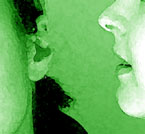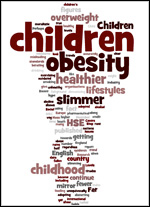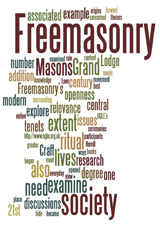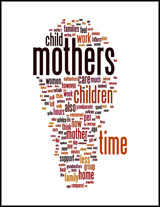Girl Talk
The new rules of female friendship and communication
A study by the Social Issues Research Centre for Diet Coke
Preface: The nature of friendship - By Kate Fox
Homo sapiens is a social animal. As a species, we are designed to live in small, stable, close-knit tribes or communities. In modern Western cultures, since the industrial revolution, there has been a significant rise in social isolation - in the fragmentation of traditional communities and kinship networks. More of us are living alone, often in big cities, working long hours and experiencing a profound sense of alienation and insecurity. But the need for social bonding, the 'tribal' instinct, is a deep-rooted part of human nature, hard-wired into the human brain by our evolutionary heritage, and there is convincing evidence that individuals in post-industrial societies are striving to re-create these community bonds, forming 'neo-tribes' and 'pseudo-kin' relationships.
These new social support networks are often based on shared interests or values, rather than kinship or local ties, but they effectively mimic the traditional kin/community networks. This trend, which I have called The New Collectivism, is particularly evident among young people, who are increasingly pre-occupied with a need for security and a sense of belonging - an intense, albeit often unconscious, longing for more primitive, pre-industrial patterns of social ties, interdependence, cooperation and social cohesion.
This longing may perhaps be even more acute among young women than young men, as the female of the human species is, if anything, even more 'social' than the male. Studies consistently show that women are more proficient than men at all forms of communication - verbal and non-verbal - more socially skilled, better at spotting and 'reading' the nuances in people's reactions and behaviour and generally more interested in people and relationships. This is evident even among new-born babies, before social conditioning could possibly have any effect. Baby girls, from as young as a few hours old, are more attracted to faces, while baby boys are more interested in looking at shapes and patterns - and baby girls maintain eye contact two or three times longer than boys. The nature of human friendship reflects the fact that for almost all of our evolution as a species we were hunter-gatherers. With division of labour, men hunted, women gathered. As far as evolution is concerned, modern industrial societies only happened in the last ten seconds or so on the evolutionary clock and really do not count. Human brains and behaviour are shaped by millions of years as hunters and gatherers and the basic wiring is still the same as it was in the Upper Palaeolithic period - the Stone Age.
Male bonding was absolutely essential for hunting. Hunting requires teamwork, which requires cooperation and, above all, trust. Male bonding was all about building that trust. This was also essential for warfare - our ancestors were fighters as well as hunters. Men who were not necessarily related to each other had to form bonds that were strong enough for them not only to hunt together effectively but also to trust each other with their lives in tribal warfare - and ultimately to die for each other if necessary.
Females, as gatherers and with responsibility for bearing and raising children, also had a critical need to build cooperation and trust with other females. A woman in childbirth or with young babies was highly vulnerable and in need of protection and support - cooperation with other females, both in gathering food and in childcare, was essential to survival. Female bonding in hunter-gatherer societies was mostly of a more ad-hoc, informal, less organised type than the male variety, conducted alongside other tasks such as gathering fruits and roots, preparing food, looking after children etc., rather than as a separate, ritualised activity. And while trust was essential, it was perhaps somewhat less of a dramatic life-or-death matter than trust among male hunters and warriors. Female friendship - based on cooperation, reciprocal helping and sharing of day-to-day tasks - and child-minding, providing care and support around childbirth, during illness and at other 'weak' or defenceless times, required a different kind of trust: not so much 'I will risk my life for you' as 'I will care for you'.
Although we no longer face the same dangers or lead the same harsh lives as our Stone Age ancestors, all the same bonding instincts are still in place, and friendship is still a vital part of our lives - perhaps increasingly so in this age of urban alienation and anomie. Despite significant blurring of the distinctions between male and female roles in modern society, 'male bonding' and 'female bonding' are in still in some ways quite different. Male bonding tends to be more formal and organised - every known human society has some form of men-only clubs or associations, special (often secret) male-bonding organisations or institutions from which women are excluded. Female bonding tends to be done more quietly and informally than the male variety, without all the fuss and bother and setting up of fancy clubs. Women just bond: we don't seem to need all the props and trappings, pomp and ceremony, sports and secrecy and silly names and funny handshakes. All women need for bonding is a couple of chairs and a pot of tea - maybe not even that.
The similarities between male and female friendships are, however, more important than the differences. For both sexes, friendship always was, and still is, a form of reciprocal altruism that assimilates non-kin to kinship roles. In other words, it is a kind of give-and-take sharing and trust-building by which people who are not related become honorary brothers and sisters. It is not surprising, therefore, that in the SIRC study both male and female respondents emphasised trust and loyalty, always 'being there' for each other and 'being oneself' as the principal and most vital elements of friendship. This is the kind of unconditional acceptance, allegiance and support that is normally associated with family, but that we also expect from our 'honorary' brothers and sisters, our friends.
It has perhaps become a bit of a cliché to say that 'friends are the new family' - and although there is some truth in this statement, it is a bit too glib and not entirely accurate. Friends have always been a kind of family - friendship has always been about treating non-kin as though they were blood relatives. There is nothing new in this: we have been doing it since the Stone Age.
Click here to download and read the full document using Adobe's Acrobat Reader.






